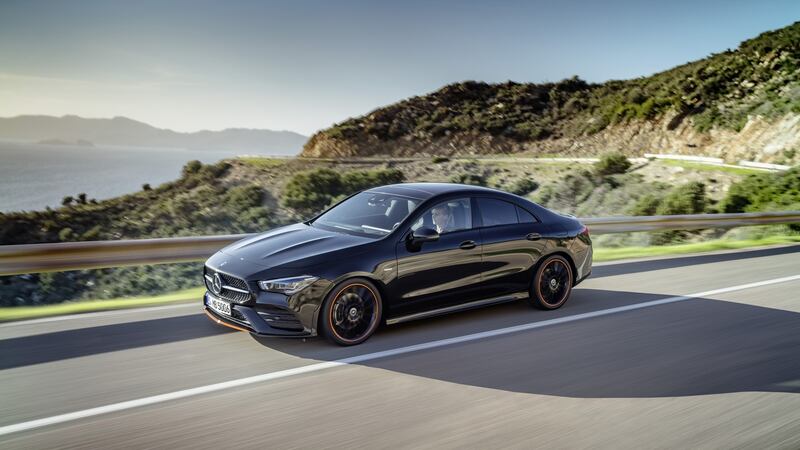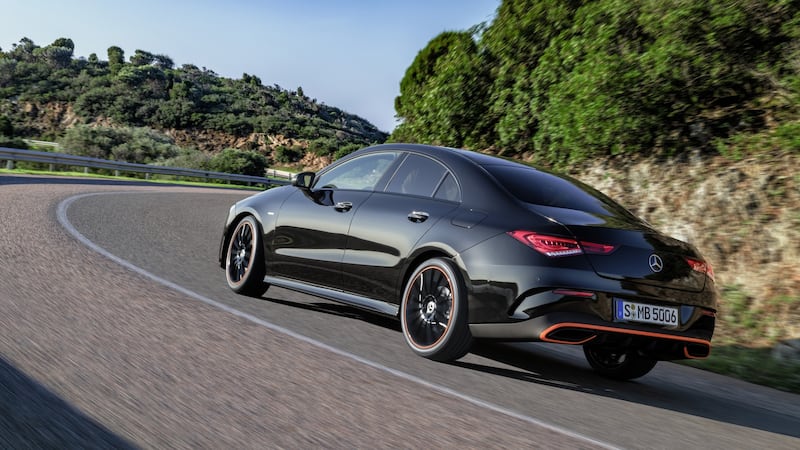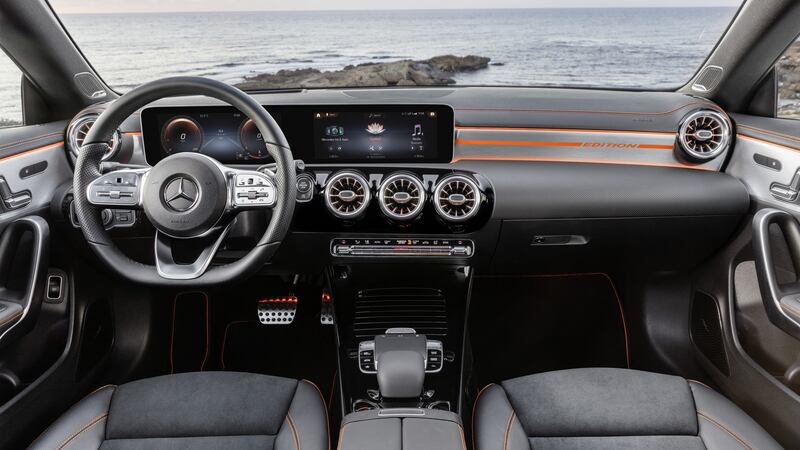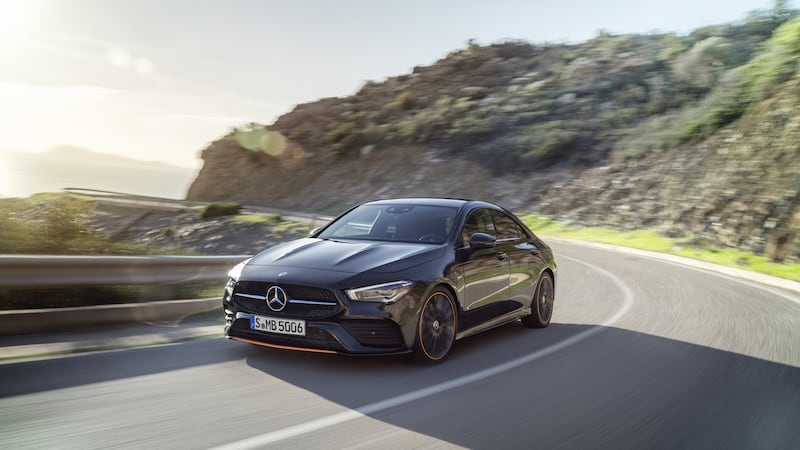There is probably no better illustration of the fracturing and niche-ification of the car market than the fact that Mercedes-Benz is about to try to sell two compact four-door saloons, based on the same front-wheel drive chassis, to two slightly different sets of customers. This would be the same Mercedes that, within living memory, used to have a model line-up that could be counted on the fingers of, at most, two hands.
First out of the front-wheel drive traps is this second-generation CLA Coupe. Well, it's called a coupe but really it's a longer, sleeker, slightly lower slung, four-door version of an A-Class hatchback. Which is status quo ante for the CLA badge – that's exactly what its predecessor was, and very successful it was too. In fact, for a time, the CLA was the best-selling Mercedes model in Ireland, until the revised C-Class came along and took back its crown.

The new CLA would probably be able to have a good stab at that, and in fact Mercedes Ireland expects that, in a full sales year, it will probably find around 500 homes a year, in line with the best years of the old version. While there’s much protest of the two cars being aimed at two different slices of the market, though, I can’t help but think that the new A-Class sedan will pinch a few sales from the CLA, especially as it’s going to be the more affordable of the two models.
Prices aren’t 100 per cent set for the new CLA, but it’s going to be more expensive than the outgoing version. Expect a basic CLA 180 petrol-engined version, with a manual gearbox, to retail for circa €34,000, with a diesel model being closer to €38,000. The diesel-petrol sales split is expected to be more or less 50:50, but I reckon those that try petrol will buy petrol, which we’ll come back to in a minute.
What is, though, the difference between the CLA and the A-Class saloon? Under the skin, they use the same basic components, and up top the commonality is clear, but to give Mercedes its dues, the two cars are quite distinctly different in some areas. And no, I don’t just mean that the CLA has frameless door glass.

Actually, the CLA is 100mm longer than the A-Class saloon, and has wider front-and-rear tracks. That’s not just a matter of having wider tyres or suspension spacers, either. The whole suspension setup has been altered for the CLA, and the extra width appears to make the car a little lower and sleeker.
It is definitely sleeker than the old CLA, which always had the appearance of a hatchback with a big droopy boot slung out the back. This new one is far smoother in its appearance, with a rear end that appears much better integrated and coherent. It also has headlights and tail lights that are subtly different to the A-Class Sedan’s. I suspect it will prove to be the case that they look more different when placed next to each other, rather than looked at individually.
The one area where the two cars are identical is in the cabin layout and design, but for once this is a good thing – the MBUX “digital plank” dashboard is one of the best recent car interior designs, maybe the best of all, and it works exceptionally well here. There’s a lot of tech on offer – the “hey, Mercedes” digital voice control assistant; the augmented reality sat-nav, a heads-up display, and a huge suite of safety gear (including a slightly-too gung-ho lane-keeping steering setup).

New to the CLA is an “energiser” system that can alter the ambient light, air conditioning, seat heating, and driving position either to help keep you more alert if you’re starting to feel drowsy, or calm you down if you’re feeling stressed. It can even be paired with a smartwatch so that the car can monitor your heart rate in real time and offer suggestions on how best to use the system. A bit of a gimmick? Doubtless, but an illustration of how we now can integrate our digital lives into our driving.
Thankfully, the more mechanical aspects of driving are somewhat more satisfying than such digital do-goodery. Mind you, that does come with the caveat that the most popular diesel model (the CLA 180d) is not as good to drive as you’d like. That’s mostly the fault of the 1.5-litre turbo-diesel four-cylinder engine which is just too noisy and doesn’t do a good enough job of gelling with the (optional) seven-speed dual-clutch transmission. It’s fine, up to a point, and should prove very frugal, but it’s a bit of a let-down to be honest.

Far, far better is the CLA 200 petrol model. This uses the new 1.33-litre turbo petrol engine (like the diesel, it's built in a co-share with Renault and Nissan) with 163hp and 250Nm of torque. It's a far better, more satisfying engine to drive than the diesel, and combines much better with the automatic gearbox. It even has a pleasingly crisp exhaust note when revved.
Its lower weight also has a beneficial effect on handling. There’s 70kg of difference ’twixt petrol and diesel, and all of that on the nose. While the diesel version is fine to drive, the CLA 200 felt far more alive, more agile, more responsive, and just simply more fun. Given that its fuel economy is only 1.5 litres per 100km worse off than the diesel’s, it’s far and away the engine we’d choose for the CLA, and one that brings some genuine enjoyment to the driving experience.
After all, isn’t that the point? If the CLA really wants to live up to the coupe badge, then it has to be engaging and fun, so this is as good a case as any to ditch the diesel.
Mercedes-Benz CLA 200 7G-DCT AMG-Line: The lowdown
- Power 163hp
- Torque 250Nm
- 0-100km/h 8.2 seconds
- Top speed 229km/h.
- Claimed economy 5.3 litres/100km (53.3mpg)
- CO2 emissions 121g/km
- Motor tax €270
- Price TBA but CLA starts at €34,000 approx
- Verdict Go for the petrol version, and the handsome new CLA is as good to drive as it is to look at








